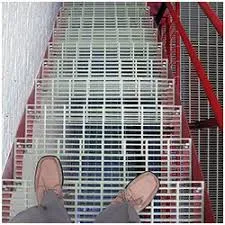
-
 Afrikaans
Afrikaans -
 Albanian
Albanian -
 Amharic
Amharic -
 Arabic
Arabic -
 Armenian
Armenian -
 Azerbaijani
Azerbaijani -
 Basque
Basque -
 Belarusian
Belarusian -
 Bengali
Bengali -
 Bosnian
Bosnian -
 Bulgarian
Bulgarian -
 Catalan
Catalan -
 Cebuano
Cebuano -
 China
China -
 China (Taiwan)
China (Taiwan) -
 Corsican
Corsican -
 Croatian
Croatian -
 Czech
Czech -
 Danish
Danish -
 Dutch
Dutch -
 English
English -
 Esperanto
Esperanto -
 Estonian
Estonian -
 Finnish
Finnish -
 French
French -
 Frisian
Frisian -
 Galician
Galician -
 Georgian
Georgian -
 German
German -
 Greek
Greek -
 Gujarati
Gujarati -
 Haitian Creole
Haitian Creole -
 hausa
hausa -
 hawaiian
hawaiian -
 Hebrew
Hebrew -
 Hindi
Hindi -
 Miao
Miao -
 Hungarian
Hungarian -
 Icelandic
Icelandic -
 igbo
igbo -
 Indonesian
Indonesian -
 irish
irish -
 Italian
Italian -
 Japanese
Japanese -
 Javanese
Javanese -
 Kannada
Kannada -
 kazakh
kazakh -
 Khmer
Khmer -
 Rwandese
Rwandese -
 Korean
Korean -
 Kurdish
Kurdish -
 Kyrgyz
Kyrgyz -
 Lao
Lao -
 Latin
Latin -
 Latvian
Latvian -
 Lithuanian
Lithuanian -
 Luxembourgish
Luxembourgish -
 Macedonian
Macedonian -
 Malgashi
Malgashi -
 Malay
Malay -
 Malayalam
Malayalam -
 Maltese
Maltese -
 Maori
Maori -
 Marathi
Marathi -
 Mongolian
Mongolian -
 Myanmar
Myanmar -
 Nepali
Nepali -
 Norwegian
Norwegian -
 Norwegian
Norwegian -
 Occitan
Occitan -
 Pashto
Pashto -
 Persian
Persian -
 Polish
Polish -
 Portuguese
Portuguese -
 Punjabi
Punjabi -
 Romanian
Romanian -
 Russian
Russian -
 Samoan
Samoan -
 Scottish Gaelic
Scottish Gaelic -
 Serbian
Serbian -
 Sesotho
Sesotho -
 Shona
Shona -
 Sindhi
Sindhi -
 Sinhala
Sinhala -
 Slovak
Slovak -
 Slovenian
Slovenian -
 Somali
Somali -
 Spanish
Spanish -
 Sundanese
Sundanese -
 Swahili
Swahili -
 Swedish
Swedish -
 Tagalog
Tagalog -
 Tajik
Tajik -
 Tamil
Tamil -
 Tatar
Tatar -
 Telugu
Telugu -
 Thai
Thai -
 Turkish
Turkish -
 Turkmen
Turkmen -
 Ukrainian
Ukrainian -
 Urdu
Urdu -
 Uighur
Uighur -
 Uzbek
Uzbek -
 Vietnamese
Vietnamese -
 Welsh
Welsh -
 Bantu
Bantu -
 Yiddish
Yiddish -
 Yoruba
Yoruba -
 Zulu
Zulu
reinforced plastic pipe
Reinforced Plastic Pipe A Modern Solution for Diverse Applications
In today’s rapidly evolving industrial landscape, the demand for innovative solutions in construction, plumbing, and various engineering fields has surged. Among these advancements, reinforced plastic pipes have carved a significant niche due to their unique combination of strength, durability, and versatility. This article explores the characteristics, advantages, applications, and future prospects of reinforced plastic pipes.
Understanding Reinforced Plastic Pipes
Reinforced plastic pipes are composite materials that incorporate a plastic base material—typically polyvinyl chloride (PVC), polypropylene (PP), or polyethylene (PE)—which is then reinforced with materials like glass fiber, carbon fiber, or aramid fiber. This reinforcement enhances the mechanical properties of the pipes, making them suitable for applications that require high strength and resistance to various stresses.
The process of reinforcement not only increases the tensile strength but also improves resistance to environmental factors such as corrosive chemicals, temperature fluctuations, and UV radiation. This makes reinforced plastic pipes a preferred choice in many demanding situations where traditional materials like metal or concrete may falter.
Advantages of Reinforced Plastic Pipes
1. Lightweight and Easy to Handle One of the most significant advantages of reinforced plastic pipes is their lightweight nature. This makes transportation, installation, and replacement much simpler and cost-effective, especially in large-scale projects.
2. Corrosion Resistance Unlike metal pipes, reinforced plastic pipes do not corrode when exposed to harsh chemicals or moisture. This property extends their lifespan and reduces maintenance needs, translating to significant long-term savings for industries that rely on piping systems.
3. High Strength-to-Weight Ratio The reinforcement provides exceptional strength without adding excessive weight. This allows for thinner walls compared to traditional materials while maintaining durability, facilitating easier design and engineering.
4. Thermal Insulation Reinforced plastic pipes have excellent thermal insulation properties, reducing heat loss in fluid transport systems. This feature can lead to energy efficiency, particularly in heating and cooling applications.
5. Versatile Applications These pipes are suitable for various applications, including water supply, sewage systems, chemical transportation, and even in the telecommunications sector for protecting cables.
reinforced plastic pipe

Applications of Reinforced Plastic Pipes
The versatility of reinforced plastic pipes has led to their adoption across multiple sectors
- Water and Wastewater Management Reinforced plastic pipes are widely used in municipal water supply and sewage systems due to their resistance to corrosion and ability to handle high-pressure conditions.
- Industrial Use The chemical and petrochemical industries utilize reinforced plastic pipes for transporting aggressive liquids and gases safely, ensuring durability and safety.
- Agriculture In agriculture, these pipes play a crucial role in irrigation systems. Their durability and resistance to varying environmental conditions make them ideal for delivering water efficiently to crops.
- Telecommunication Reinforced plastic pipes are often used as conduits for fiber optic cables, protecting them from environmental damage.
Future Prospects
As technology advances, the manufacturing processes for reinforced plastic pipes continue to improve, leading to even better performance characteristics and lower production costs. The integration of smart technologies, such as sensors in pipes to monitor usage and detect leaks, adds another layer of functionality that can transform how industries manage their piping systems.
Sustainability is also a significant focus moving forward. With the increasing emphasis on environmentally friendly practices, the development of biodegradable composite materials for reinforced pipes promises to make a positive impact on reducing plastic waste in the environment.
In conclusion, reinforced plastic pipes represent a modern, efficient solution to the challenges faced in various industrial applications today. With their remarkable properties and versatility, they stand ready to support industries as they evolve, ensuring that they can meet both current and future needs effectively. As we move forward into an era that prioritizes innovation and sustainability, reinforced plastic pipes will undoubtedly play a critical role in shaping the infrastructure of tomorrow.









